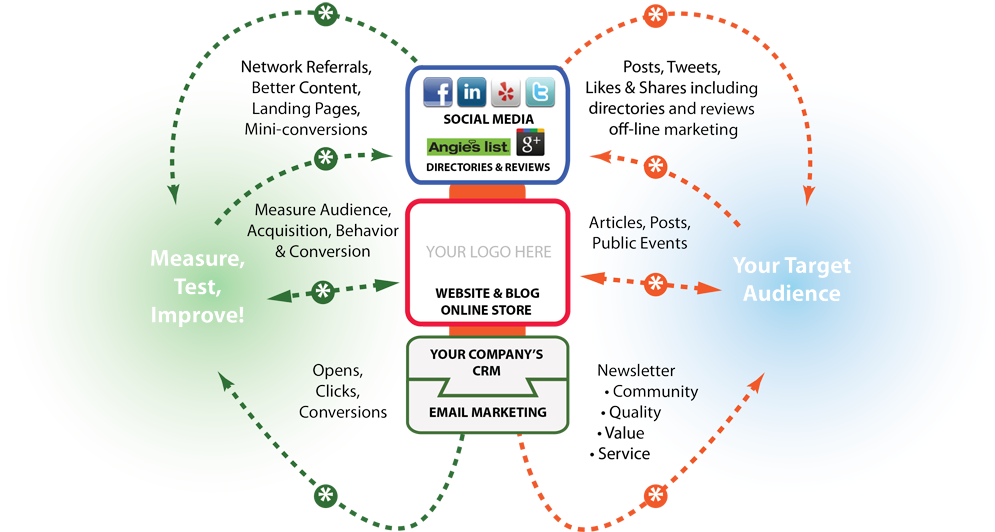O V E R V I E W :
Many firms face challenges and become stymied because of inefficient sales processes and the lack of an integrated analog and digital marketing strategy. No two firms are the same, but the idea of a sales and marketing “EcoSystem” applies to most contexts and can be customized to suit the needs of your business.
C H A L L E N G E :
We work with a firm in a very narrow niche of the industrial equipment space. Over several years the company has sold or serviced hundreds of clients and has relied on market knowledge and industry connections to achieve this level of success. The keys to success in their sales and service markets are strong customer relationships and intimate knowledge of the type, condition and age of equipment a customer or prospect owns.
The firm wanted to expand sales by leveraging the owner’s knowledge and contacts, and by building a digital ecosystem where all components – the online store, website, CRM and outbound marketing – work seamlessly and efficiently together.
S O L U T I O N :
2.0heads began with an in-depth analysis of the business to understand how the equipment sales, service and online parts store worked together. What we discovered was that many of the systems – call reports, online store, website, etc. – were not connected.
For example, service calls generated a written call report identifying the model and age of the machine being serviced, the type of service being performed, and suggested future service needs. Unfortunately, without a way to centrally store and act upon this valuable information, follow-up sometimes did not occur.
Based on this understanding, we worked together to define the desired outcomes and measurements for success including:
- Increasing new and used machine sales 50% year-over-year
- Increasing online store sales by 100% year-over-year
To achieve these outcomes, and as illustrated above, a fully-integrated digital sales ecosystem was designed and implemented.
Unlike the previous, manual client relationship management system that relied on hand-written notes and stored emails, the new cloud-based system centralized and automated data collection and storage, allowing intelligence to be shared and scaled over both the service and sales organizations.
Critical to the success of the digital sales ecosystem was the implementation of a CRM that served as the data hub for all of the other digital components. Every email sent or received, store order placed, service call made or newsletter read can be captured in the CRM and used to deepen the relevancy of every touch with the client. For example, CRM workflows were designed to automatically send out customized emails when a client’s machine needed service or replacement parts, enabling critical information gathered by service technicians to be turned into repeat service and new online store sales.
R E S U L T S :
By developing a digital sales ecosystem that harnessed the power of data and provided the tools to act upon that data, the client was positioned to:
- Expand the number of maintenance and service calls because of more timely outreach to prospects and clients
- Monetize the increase in web traffic and customer email lists by expanding the online sales of parts
- Increase direct sales of equipment by improving the quality and frequency of contact with customers and prospects

